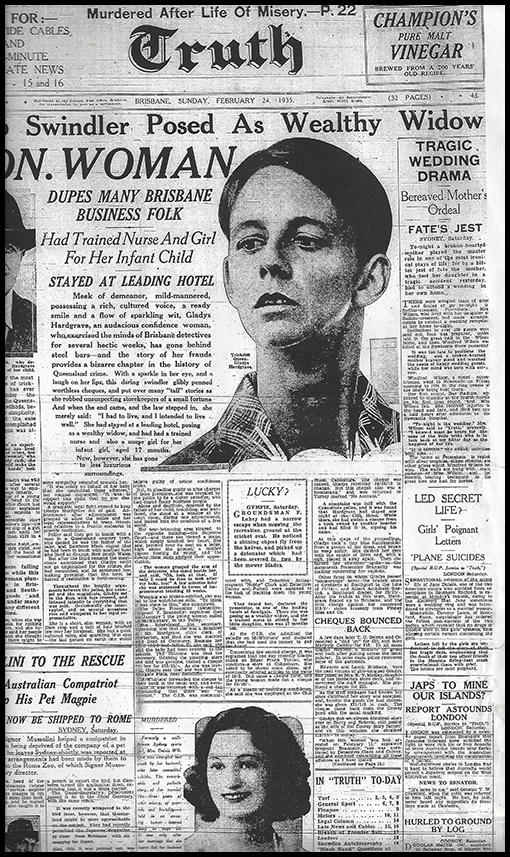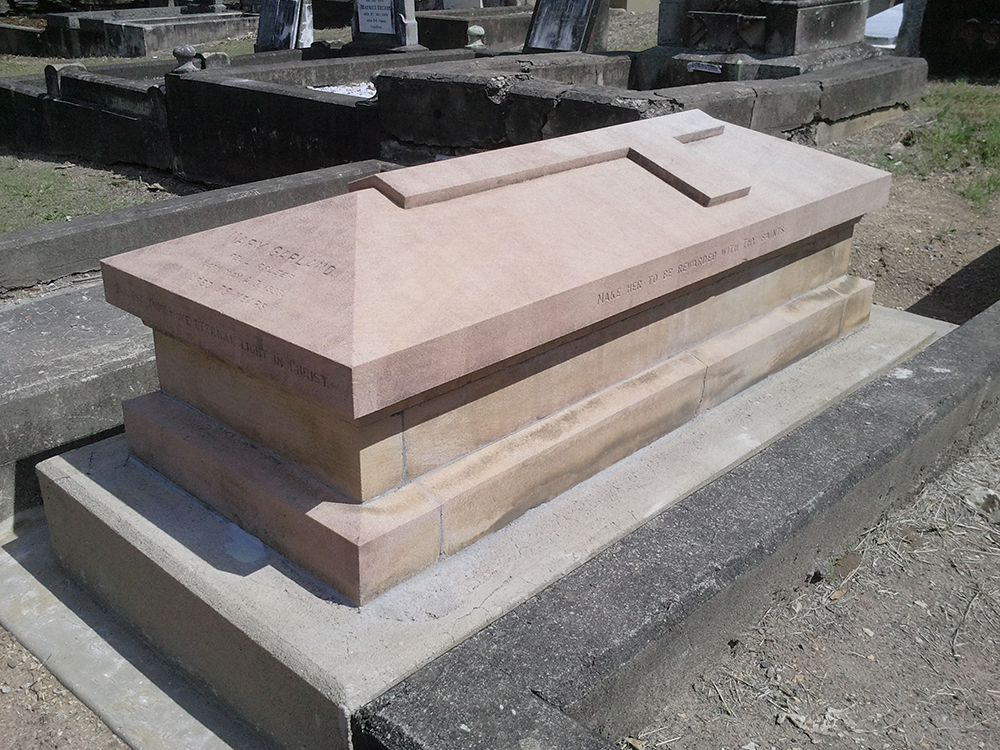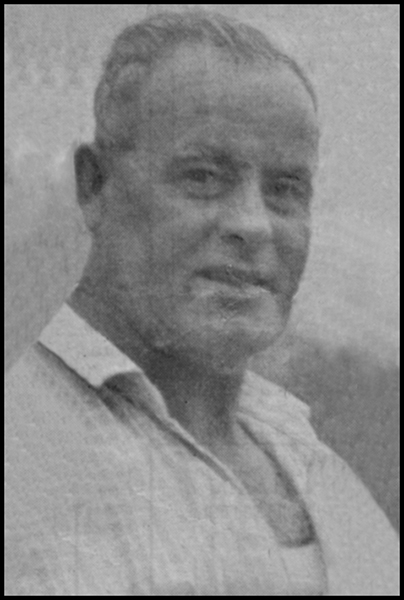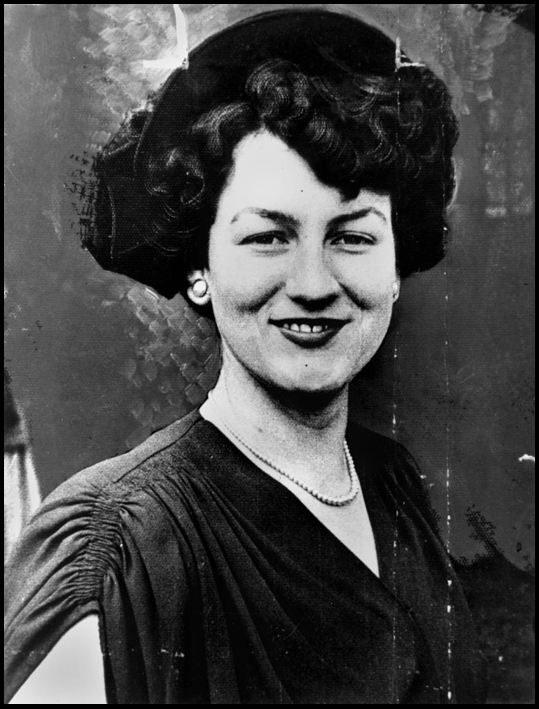Fish in Prison: Riots from a prisoner’s perspective (1980s)
In the 1980s Boggo Road Gaol was constantly in the headlines. It became a place of riots, hunger strikes and rooftop protests. Many of the prisoners were prepared to starve themselves and even die to tell the world that Boggo Road Gaol needed to go. Within No.2 Division, cells had no toilets and running water, food was inadequate, and prisoners were often treated harshly. Compared to the rest of Australia, it was like going back a century.
Over the years there were many riots and protests leading up to the closure of Boggo Road Gaol. In 1983 rioters took over and destroyed the Industrial Division, damaging cells to the point they were uninhabitable for six months. They rioted in D Wing, burning their sanitation tubs, urinating and dropping burning debris on the fire brigade and officers as they attempted to subdue the inmates.
Finally the authorities started to take notice and in 1986, construction of three new prisons was granted and work began to build the Wacol HM Brisbane Industrial Prison, HM Prison Chewko and Borallon Prison. In 1988 the Cabinet commissioned Mr Jim Kennedy to review the corrective services in Queensland bringing about the closure of Boggo Road Gaol, with No.2 Division being closed in 1989.
Glen “Fish”, a former prisoner at Boggo Road Gaol during the 1980s, witnessed firsthand the chaos within the red brick walls: being crammed in exercise yards with 30 other men, the brutal bashings and hunger strikes. On 4BC TRUE CRIMES Jack Sim will be discussing this tumultuous time in the Prisons history and the closure of Boggo Road Gaol.
Listen to this fascinating story on Australia’s longest running true crime show TRUE CRIMES – presented by Jack Sim on 4BC Nights with Walter Williams. Thursday evenings 9.35pm on Radio 4BC.
DUPED BY A CON.WOMAN : Gladys Hardgrave (1935)
On the 24th of February 1935 The Truth Newspaper reported that Gladys Hardgrave was found guilty of astute confidence tricks, after a dramatic legal fight. This short, slim woman with tear brimmed sparkling blue eyes stood weeping as she was sentenced to 37 weeks imprisonment. As she was led to the watch house cells she murmured “to think it has come to this”.
At large in Queensland for little over a month, Gladys Hardgrave posed as a gentlewoman, robbing businesses in Brisbane, Caboolture and Southport of more than £123 (roughly $10,670). She was revealed to be a clever swindler, tricking over 7 stores, banks and business people. Purchasing shoes, hotel rooms, clothing by handing them boomerang cheques and simply walking away with goods and money. Dud cheques fell like autumn leaves.
The C.I.B. Branch started their investigation, Detective acting Sergeant “Nobby” Clark, Detective Currey and Purcel were assigned to the task of catching this fraud. They found her in one of the leading hotels in Sandgate, posing as a wealthy widow, with a trained nurse to attend to her 17 month old daughter.
When arrested, Gladys was wild and uncaring, but after hours in court she began to weep with her head bowed. She told detectives her crimes were committed in order to live well and look after her baby.
Hear more about Gladys on Australia’s longest running true crime show “True Crimes” – presented by Jack Sim on 4BC Nights with Walter Williams. Thursday evenings 9.35pm on Radio 4BC.
Did she kill her husband or was she unfairly executed? (1887)
At 8 o’clock on Monday morning, 13 June 1887, Ellen Thomson was hanged at Her Majesty’s Brisbane Gaol for the murder of her husband. She is the only woman to be executed under Queensland law and on the gallows of Boggo Road Gaol.
But did she receive a fair trial, and did she deserve the ultimate punishment?

VASHTI FARRER was fascinated by the life and death of Ellen Thomson after stumbling upon her story in the museum at Port Douglas. Initially Vashti wanted to write a novel, weaving the perspectives of Ellen, her lover and her husband together, but instead has created a wonderful work of non-fiction set in the historical and social context of the times. Beyond a reasonable doubt outlines events of that fateful night, the subsequent trial and executions and gives a fascinating insight into life at the time. It also raises the question, was Ellen Thomson guilty beyond reasonable doubt?
Listen to Jack Sim and Vashti Farrer discuss the story of Ellen Thomson on Australia’s longest running true crime show “True Crimes” – presented by Jack Sim on 4BC Nights with Walter Williams. Thursday evenings 9.35pm on Radio 4BC.
You can purchase Beyond a reasonable doubt at the Boggo Road Gaol shop. Join Ghost Tours Pty Ltd on a ghost tour within the walls of Boggo Road Gaol and hear the story of Ellen Thomson.
https://bookings.ghost-tours.com.au/products.asp?Category_ID=369
REOPEN A MYSTERY: MARJORIE NORVAL (1938)
Brisbane True Crimes author Ken Blanch, will call on Attorney-General Jarrod Bleijie to reopen the case of the 1938 mysterious disappearance of a Brisbane social identity when he launches his latest book nest Sunday November 5 at Boggo Road Gaol.
In Marjorie Norval: The Girl a railway Station Swallowed, Ken Blanch recalls the sensation and the massive police and fatal air force search that resulted when Miss Norval failed to return from a trip to Bundaberg to see a sick relative. He also produces evidence that her inquest was manipulated to avoid a political scandal.
Marjorie Norval was well known in Brisbane – the social secretary to the wife of Premiere William Forgen Smith was driven to Brisbane’s central railway station on the 11th of November 1938 and was officially never seen alive or dead again.
Miss Norval told her friends and work colleagues that she was going to Bundaberg, but had told her sisters that she was going to the North Coast with secret business for the Premiere.
The coroner, Mr J Leahy, concluded that she had died at the hands of an unidentified abortionist. The inquest was held was the first held in Queensland into a case where a body had not been found.
In this book Ken Blanch reconstructs Marjorie’s movements on the night she disappeared and shows she would have exited the railway station unobserved and walked the short distance to the rooms of Brisbane’s most active medical abortionist of the time in Edward street.
Blanch also accuses a former Police Commisioner of failing to properly investigate a sighting of Marjorie Norval the next day at the Doctor’s Caloundra holiday home and uncovers the men who conspired to perjure evidence given at the inquest to prevent a political scandal.
Blanch has published reviews of homicides that he covered as a Police rounds reporter during the 1950s with Jack Sim’s Classic Crime series, but is now self-publishing as Seagle Crime Stories. His new book Marjorie Norval: The Girl a railway Station Swallowed is the first in a series of a small books about unsolved Queensland crimes and is available from Blanch’s website www.seaglecrimestories.com and the Boggo Road Gaol Shop.
BOOK LAUNCH In Marjorie Norval: The Girl a railway Station Swallowed
When: Sunday November 9, 10.30am
Where: Boggo Road Gaol Shop at Boggo Road Gaol Precinct, Annerley Road, Dutton Park
Hear who Ken Blanch believes had a hand in the disappearance of Marjorie Norval Thursday 6.11.2014 on Australia’s longest running true crime show “True Crimes” – presented by Jack Sim on 4BC Nights with Walter Williams. Thursday evenings 9.35pm on Radio 4BC.
WATERHOLE DROWNING : REVEREND JOHN GREGOR (1848)
WATERHOLE DROWNING: REVEREND JOHN GREGOR (1848)
Early newspapers in Brisbane frequently carried reports of tragic deaths by drowning in the surrounding waterholes. Many sank to the depths by accident, unable to swim. Others stumbled in to the water drunk or committed suicide.
A sad story was posted in a local Newspaper in 1848. Reverend John Gregor was found dead in a Nundah waterhole. John Gregor, ordained as a minister of the Church in Scotland made his way out to New South Wales in 1837. Licensed as minister of the district of Moreton Bay, he arrived in Brisbane on 17 January 1843 with Captain John Wickham, the first resident police magistrate. Gregor was responsible for the whole inhabited area around Moreton Bay, a huge area for one man to manage.
He worked out of a crude church attached to a lumber yard. Under constant financial strain, supervising so many people and day schools his work started to wear him down. His first report, ‘Two Journals of Missionary Tours in the Districts of Maneroo and Moreton Bay, New South Wales in 1843’ (S.P.G., The Church in Australia, London, 1846), was enthusiastic, but the next indicated his growing discontentment. From 1845 he lived at the German station at Nundah, and this further distanced him from the flock.
Theodore Franz, a witness said that Reverend Gregor had been complaining of a headache and the heat, watching him walk down to the waterhole he assumed it was just to bathe and cool off.
“About ten minutes afterwards, I heard Nicquet calling to me and asking if Mr. Gregor could swim. I answered “No” and hurried to the place where he was. I did not see Mr. Gregor there. I undressed myself and sprang into the water and swam to the place where I thought Mr. Gregor might have sank— Mr. Nicquet also came into the water. He felt the body of Mr. Gregor with his feet, but could not succeed in raising him; but after another attempt he did succeed. I assisted to draw the body to the land—there was no appearance of life, although the body was warm. We did all we could to restore life, but without success.”
Do you think it was just an accident? Find out on Australia’s longest running true crime show “True Crimes” – presented by Jack Sim on 4BC Nights with Walter Williams. Thursday evenings 9.35pm on Radio 4BC.
ON THE RUN IN JAIL : WILLIAM STOKES (1974)
This week the people of Queensland have been amazed with the arrest of two men in relation to the disappearance of Barbara McCulkin and her two daughters in 1974. This 40 year old cold case suddenly appears close to having a solution. One line of inquiry pursued by Police to explain why Mrs McCulkin and her children were murdered, was that she had valuable knowledge relating to the Whiskey Au Go Go night club bombing. Another person who claimed to have inside knowledge was Billy Stokes.
37 years ago the Sunday Sun Newspaper published a story titled “ON THE RUN IN JAIL”. Prison officials were forced to transfer an inmate from Boggo Road to Wacol Prison following a confrontation with the Whiskey Au Go Go killer John Andrew Stuart.
In an incredible twist William Stokes, a staunch supporter of Stuart’s innocence turned on Stuart and labelled him as a killer. In February 1975 Billy Stokes published an account of the firebombing of the Whiskey Au Go Go Nightclub in Port News – which he claimed the crime was carried out by a group of criminals known as the “Clock Work Orange Gang”. As editor of this Brisbane publication Stokes used the magazine to publish strongly worded articles supporting the innocence of John Andrew Stuart and James Finch – the two men convicted of the firebombing in which 15 people died.
Hear what Stokes had to say on Australia’s longest running true crime show “True Crimes” – presented by Jack Sim on 4BC Nights with Walter Williams. Thursday evenings 9.35pm on Radio 4BC.
The First Anzac Day: Canon David John Garland
Whether getting up at the crack of dawn for the service, or remembering in silence those who fought and lost their lives in war – Anzac Day has become a huge part of our lives. But not many people think about how ANZAC Day came about or that the originator and architect of Anzac Day ceremonies and rituals – Canon David John Garland is buried in Toowong Cemetery.
Chaplain Lieutenant-Colonel David John Garland campaigned in Queensland for legislation so Anzac Day could be a public holiday for solemn commemoration which was achieved in 1921. Garland was also chaplain for soldiers assembled in Brisbane prior to embarkation from 1915 till late 1917. He then served as Chaplain in Middle East until 1919.
He developed special burial services for those laid to rest at cemeteries and raised funds for memorials to honour those who served, including management of the soldiers’ graves at Toowong Cemetery. He initiated the Anzac Day march, the returned soldiers’ luncheon, the two minutes silence, the wreath-laying ceremonies at memorials and the special church services. He also began a trust to use funds raised from selling Anzac Day badges and ribbons for the care of soldiers’ graves at home and overseas. The ceremonies ad badge were taken up in other States in Australia, in New Zealand and Great Britain. Garland inaugurated an ANZAC Day service at the cemetery in 1920.
To commemorate the 75th anniversary of Garland’s death, the Friends of Toowong Cemetery has facilitated the restoration of his grave as it will be the focus of visitation over the next four years during the commemoration of the centenary of World War One. Canon Garland’s grave was restored by Queensland Heritage Masonry funded by the Toowong Cemetery Heritage Fund established by Jack Sim.
On behalf of the Friends of Toowong Cemetery, we would like to invite you to observe the rededication of Canon Garland’s grave on Saturday 18 October 2014 at 2pm. The service, led by the Reverend Dr John Moses, will be followed by afternoon tea. Please enter Toowong Cemetery by the main gate and follow the directional signage to the grave site located in Portion One. RSVP not required.
Available for purchase on the day will be Anzac Day Origins: Canon DJ Garland and Trans-Tasman Commemoration by Rev. Dr J Moses and Dr George Davis.
[soundcloud url=”https://api.soundcloud.com/tracks/174008097″ params=”auto_play=false&hide_related=false&show_comments=true&show_user=true&show_reposts=false&visual=true” width=”100%” height=”250″ iframe=”true” /]
Find out more on Australia’s longest running true crime show “True Crimes” – presented by Jack Sim on 4BC Nights with Walter Williams. Thursday evenings 9.35pm on Radio 4BC.
LOWOOD HORROR: BOOTS HOBSON (1961)
West of Brisbane sits the tiny suburb of Tarampa near Lowood. This quiet rural setting was turned into a 5 mile long crime scene on Boxing Day, December 1961. The afternoon of celebration and time with family was cut short when the killer went on a rifle rampage through neighboring farms and streets killing a couple and severely injuring two others. When interviewed by Police he seemed to have no clear motive – and claimed “I had nothing against the people”.
The killer was a youth of 17, living with his family on a small farm at Tarampa in the Lockyer Valley. John “Boots” Hobson was the eldest of 5 children, he was deeply tanned and well built from working on the family farm throughout the day. After a row with his father over feeding the fowls, Hobson took grabbed his 22. rifle and stormed out. Making his was through four neighboring farms he shot anything that moved, shooting birds, animals and people. When police converged on the area they followed the trail of dead birds and animals to Hobson.
John Hobson had willfully murdered Anna Freese 58, and her husband Albert Freese also 58. He attempted to kill Mary Jendra, 32 and Andrew Jendrachowski 44. The surviving pair were hospitalised and kept under close observation. Mary, who had been shot in the left side of the groin was in a satisfactory condition. Her brother-in-law Francis Jendrachowski who was shot in the side of abdomen was in a critical conditional and later passed away.
Hobson was charged before Mr.V.L Wilson. He was handcuffed during the court proceedings and only six members of the public were in court. Hobson was taken to the remand section of Boggo Road Gaol where he would serve out his life sentence.
On Monday, 7 March 1966, at 2.10pm, Bernard “Bernie” Ralph, aged fifty, devoted husband and father of three, was brutally attacked in the prison workshops by John Hobson. Hobson had clashed with warder Ralph earlier that day. Working in the boot shop Hobson struck the unsuspecting officer twice on the head with an iron bar severely fracturing his skull
Hobson’s motives for killing Ralph remain unclear, a psychiatrist testified that if Ralph had said “please” to Hobson he would have not been attacked. Already serving life, Hobson had nothing to lose. Ralph died in hospital from his extreme injuries.
[soundcloud url=”https://api.soundcloud.com/tracks/174009560″ params=”auto_play=false&hide_related=false&show_comments=true&show_user=true&show_reposts=false&visual=true” width=”100%” height=”150″ iframe=”true” /]
Find out what happened to John “Boots” Hobson on Australia’s longest running true crime show “True Crimes” – presented by Jack Sim on 4BC Nights with Walter Williams. Thursday evenings 9.35pm on Radio 4BC.
THE END OF “THE ROAD”: Boggo Road Gaol (1989)
NOTORIOUS No2 DIVISION – CLOSED – 25 YEARS AGO
As prisoners sat on the tin roof of F Wing Cellblock in Number Two Division for a fifth day in March 1988 Corrective Services Minister Mr Cooper announced Brisbane businessman Jim Kennedy would chair an inquiry into the chaos that was Queensland’s prison system. Boggo Road Gaol was a national embarrassment with rolling riots, hunger-strikes, bashings, allegations of corruption, and roof-top protests by inmates.
The Kennedy Report, delivered in 1988, recommended extensive and sweeping reforms – a complete cultural change – away from punishment and retribution – to correction and rehabilitation. Kennedy also controversially recommended the closure of Brisbane Prison – Boggo Road Gaol. Notorious Number Two Division – scene of so much trouble in the 1980s – was the first part to close a quarter of a century ago, on 25/26th September 1989 – the beginning of the end of “The Road”. Number One Division was next, in 1992 (the official closure date). The last section to close was the Brisbane Women’s Correctional Centre shut in 2002, only 12 years ago.
Heritage-listed Number Two Division is today the only remaining section of “The Road”. Since December 2012 Boggo Road Gaol Pty Ltd has been conducting historical tours, events, re- enactments & experiences at this historic site. Leighton Property will soon reveal future of Gaol and its surroundings – as part of the Boggo Road Urban Village.
During October 2014 Boggo Road Gaol is holding special events, tours and experiences including prisoner graffiti tours, ex-officer/ ex-inmate tours and book launches to acknowledge the 25th anniversary.
Click here to discover what’s on at Boggo Road Gaol
Thursday 25 September 2014 9.30pm
TRUE CRIMES with Jack Sim – 4BC Nights with Walter Williams On this episode of True Crimes 25years since closure of No 2 Div. This notorious section of Boggo Road, the scene of riots and rooftop protests in the 1980s, closed quietly a quarter of a century ago.
[soundcloud url=”https://api.soundcloud.com/tracks/174009339″ params=”auto_play=false&hide_related=false&show_comments=true&show_user=true&show_reposts=false&visual=true” width=”100%” height=”150″ iframe=”true” /]
Tonight we discuss this, the success of reforms that followed the Kennedy Report and what the future holds for Boggo Road.
True Crime is a weekly program – Tune in for Free!
“WHO KILLED HER?”: BETTY SHANKS (1952)
This year marks 62 years since Betty Thomson Shanks – a kind, thoughtful young woman, was brutally murdered in the Brisbane suburb of Wilston, only a few hundred meters away from her home. It is still Queensland’s longest running cold case. This was the crime said to have stolen Brisbane’s innocence. The Brisbane of the 1950s was a place of unlocked doors, open windows and the belief that women would be safe walking home in the evening – all of that changed within 24 hours of the murder, there were fears the maniac would strike again.
There have been plenty of theories and speculation about this cold case including possible suspects and false confessions. There have been four major theories about who killed Betty; one of them was an accusation that came to light in 1999.
The allegation caused a sensation at the time and was reported on the front page of the Courier Mail. A woman (Desche) accused her father of murdering Betty Shanks. She told authorities her violent and short tempered father Eric had been having an affair with Betty Shanks and was furious she had returned late from a lecture that fateful night.
According to Desche, the night of the murder her father left her with her brother in the family car, just around the corner from the crime scene. Her father disappeared leaving them alone while he flew into a frenzied attack, beating, kicking and strangling Betty to death. Returning home, he stripped off his bloodied clothes and burnt them. The next morning he ordered Desche to clean the car and his shoes.
Desche remembered cleaning off slimy brown material from the car, a substance she now believes was blood.
“I started picking stuff off his shoes with my fingers to get all the bits out of the groove where the leather meets the sole.” she said. “I thought I was picking off mud because it was kind of slimy, brown and other colours. Now I realise it was skin, tissue, hair.”
Detectives investigated Desche’s allegations, but were unable to link her father to the killing. This was a claim many thought would finally solve the infamous murder mystery, but there has been no evidence to suggest his guilt.
Former journalist and author of Who Killed Betty Shanks – Ken Blanch believes the killer may still be alive. Tonight listen to this fascinating story on Australia’s longest running true crime show “True Crimes” – presented by Jack Sim on 4BC Nights with Walter Williams. Thursday evenings 9.35pm on Radio 4BC.
PURCHASE THE BOOK “WHO KILLED BETTY SHANKS” BY KEN BLANCH HERE
Experience Boggo Road Gaol through Tours and Events

















